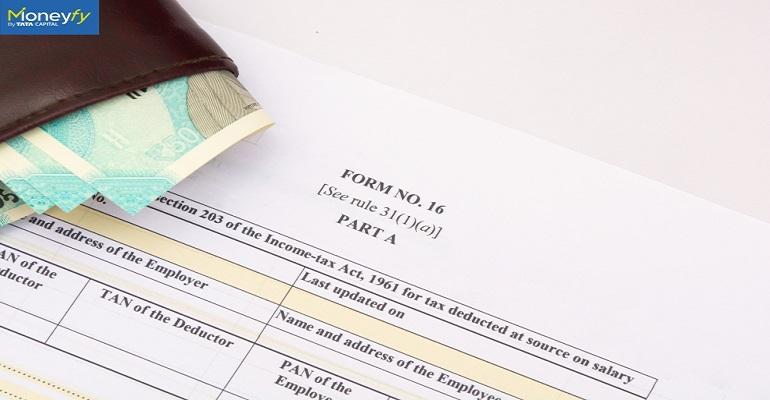This product offering is currently unavailable. We will be back soon. Till then please explore our other products.
As the last date of filing tax returns comes closer, it becomes crucial for you to ensure that all the work is officially done. It is beneficial for you to keep all the documents ready beforehand as it ensures that the entire tax filing process goes smoothly and quickly. While documentation is crucial, remember to make the right investments to save your Income Tax as well. Tata Capital Moneyfy is a digital platform that would help you in terms of making the right investment which is necessary for tax saving.
Speaking of documentation, Form 16 is one of the most important and sought-after forms when you talk about Income Tax Returns. Form 16 is basically a certificate that is issued to individuals who have a salary. If you happen to be a salaried person, your employer would issue you a Form 16 when tax is deducted from your salary and is deposited to the department of Income Tax. Form 16 is used by companies and establishments in providing details of deducted tax.
If you happen to be an individual with a salary of above the exemption limit of Rs. 2,50,000 a year, your employer would have to deduct the tax amount from your salary and then deposit the amount at the Income Tax department. The following are some points to note about what Form 16 works as:

There are two components or parts, namely A and B of Form 16.
The following is a list of contents that are part of the Form 16:
Additional Read: Find out How ELSS Can Be a Great Tax Saving Option
Your employer will be using the TRACES portal to generate Form 16-A for you. It will be verified and authenticated by your employer to ensure that the information and details on it are correct before handing it over to you.
The following are the details that are to be found in your Form 16-A:
Form 16-B would serve as the annexure of Form 1-A. The following are the details that are to be found in your Form 16-B:
Additional Read: 5 Ways to Minimize your Taxes and Maximize Investments
You will receive your Form 16 from your employer. You cannot download it from any website or portal.
Form 16 is not required mandatorily if there is no TDS deduction.
You need to pay the taxes if your salary is more than the permitted exemption limit.
If you are stressed about your financial goals and the procedures you need to follow, you might want to use Tata Capital Moneyfy App. It would provide you an easy online platform to complete your KYC, look at multiple options of investment, and make the processes easier, faster and better.